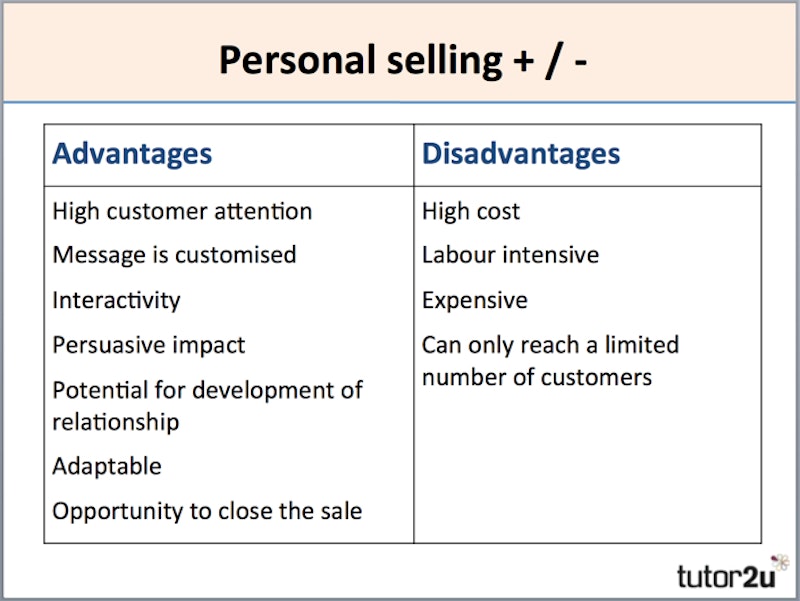Study Notes
Personal Selling & Merchandising
- Level:
- GCSE, AS
- Board:
- AQA, Edexcel, OCR, IB
Last updated 22 Mar 2021
Personal selling is where businesses use people (the "sales force") to sell the product after meeting face-to-face with the customer.
The sellers promote the product through their attitude, appearance and specialist product knowledge. They aim to inform and encourage the customer to buy, or at least trial the product.
A good example of personal selling is found in department stores on the perfume and cosmetic counters. A customer can get advice on how to apply the product and can try different products. Products with relatively high prices, or with complex features, are often sold using personal selling. Great examples include cars, office equipment (e.g. photocopiers) and many products that are sold by businesses to other industrial customers.
The main advantages and disadvantages of personal selling can be summarised as follows:

Point-of-sale merchandising can be said to be a specialist form of personal selling. POS merchandising involves face-to-face contact between sales representatives of producers and the retail trade. A merchandiser will visit a range of suitable retail premises in his/her area and encourage the retailer to stock products from a range. The visit also provides the opportunity for the merchandiser to check on stock levels and to check whether the product is being displayed optimally.
You might also like
Marketing: Personal Selling (GCSE)
Study Notes
Promotion Decisions
Quizzes & Activities